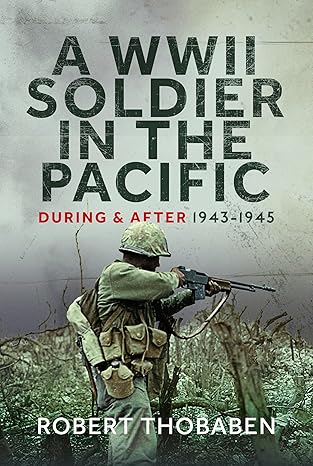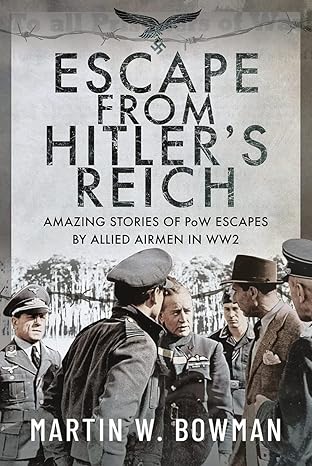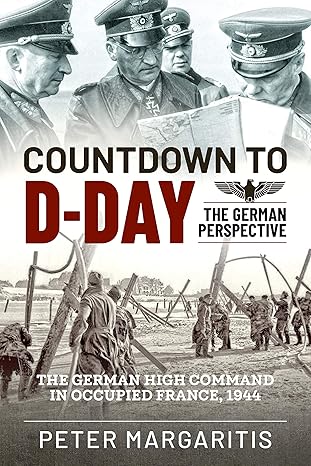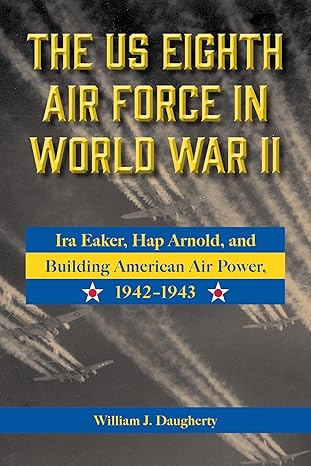Okinawa: Isolation or Annihilation?
By Russell Moore
The battle of Okinawa was a bloody preview of what an invasion of the Japanese home islands could look like. Okinawa was the costliest battle between US and Japanese forces in World War II. General Buckner, who led the 10th army on Okinawa, has received a mix of criticism and praise for the way he conducted the campaign. Tragically General Buckner died right before the battle ended so there was no opportunity to ask him to reflect on his command decisions during the battle. Most criticism has been focused on Buckner’s reluctance to launch flanking amphibious assaults on the entrenched Japanese troops on the southern part of the island. This forced his Army and Marine soldiers into costly frontal attack after frontal attack. His defenders say the amphibious flanking attacks were too risky and worried about an Anzio type of stalemate or worse. But was there another alternative that should have been considered? Could Buckner have considered a strategy of isolation instead of annihilation and perhaps saved the lives of thousands of US forces?
2,938 US Marines, 4,675 US Army personnel and 4,900 Allied Navy personnel died during the battle. Over 66,000 were wounded or suffered from non-battle injuries such as combat fatigue. The US lost 763 aircraft and 38 ships sunk. Another 368 ships were damaged. The Japanese casualties are harder to assess but roughly 70,000 died, another 20,000 were injured and 7,830 aircraft were destroyed plus sixteen ships were lost. Estimates also vary on the number of Okinawan civilian deaths but some run as high as 122,000. Given the Iwo Jima and Peleliu campaigns, US commanders were expecting a tough battle: Reconnaissance showed heavily fortified positions, the estimated number of Japanese troops was about 75,000 (which turned out to be a low estimate), and Okinawa was Japanese soil.
In most long-lasting wars, combatants tended to evolve their tactics over time based on lessons learned and changing situations. Early in the war when the Japanese were on the offensive, the formula for victory included: rapid movement, banzai attacks, jungle & night infiltration, the high morale of their light infantry forces, and support from superior naval and air units. Allied troops found themselves outflanked and overwhelmed time and again. With Japanese control of the seas and the air, the Allies found it difficult to fight back effectively.
When the Japanese lost the initiative after the Battle of Midway and the beginning of the Guadalcanal campaign, their tactics needed to be adjusted but for a long time they weren’t. Banzai charges into Marine machine guns did not usually work. As the campaign in Guadalcanal swung back and forth, the air and naval attrition wore down the Japanese while the Allied forces kept getting stronger. Slowly the Japanese were forced entirely onto the defensive. The Allies were learning that Japanese troops weren’t invincible and that if prepared, night infiltration could be defeated just like banzai charges were. The Allies usually had more artillery, automatic weapons and tanks and they learned to use these to good effect. The Allied naval and air units were getting better equipment and training and slowly took control of the air and seas.
At this point the Japanese began to rely on fortifications more and more-especially on their smaller island bases. As the Allies started to break into the Japanese defense perimeter, the best the Japanese could usually hope for was to inflict heavy casualties on the attacker and hope for a miracle naval victory. Every time they began losing, the Japanese fell back on banzai attacks and now the US troops were ready and usually defeated them. While the first few island victories were costly for the Allies, they learned and adjusted. New tactics included more preliminary bombardment, more artillery support, flamethrowers and advanced demolitions. Veterans trained new troops in the tactics of destroying Japanese fortifications and resisting banzai and night infiltration tactics.
The Japanese finally realized they had to try something else. The banzai charge had to be dispensed with in the face of overwhelming US fire support. Their air and naval forces could no longer meet the Allies on any kind of an even footing. In the air, the Japanese resorted to Kamikazes to try to destroy the Allied naval forces. The ground troops went underground. Utilizing existing caves where possible but blasting and digging out rock where there weren’t, the Japanese went underground and began fighting battles of attrition. They knew it would still be difficult to win these battles but they could inflict heavy casualties. If they were really tenacious then perhaps they could hold on until the Kamikazes could destroy the Allied fleets and without supplies, the invaders could be defeated. On Iwo Jima, almost 7,000 US troops lost their lives and more than 19,000 were injured while the Japanese lost around 18,000 troops. At Peleliu, over 2,000 US troops died and over 8,000 were wounded. The Japanese had over 10,000 killed. The Philippines campaign was more conventionally fought because the land mass was much bigger that the Japanese couldn’t fully employ their new tactics. The new Japanese strategies were working at least in the area of making the Allied victories costlier.
The Allies didn’t change their strategy that much for the Okinawa campaign, even after the painful lessons of Iwo Jima and Peleliu. They planned to rely on overwhelming air and naval support, plentiful artillery, tanks, flamethrowers and high explosive. They had made some adjustments-more flamethrower tanks, napalm, new recoilless rifles, larger numbers of fighters on the aircraft carriers, etc. But none of these changes were enough in the face of the skillful Japanese tactics and fortifications on Okinawa and the Kamikazes in the air. Although the US forces ultimately won the battle, the casualties were ruinously high and did not bode well for an invasion of the Japanese home islands.
On Okinawa, the vast majority of these casualties for both sides were incurred in the intense fighting in the southern eighth of the island. Whenever the Japanese came out of their defensive positions to attack, they took heavy casualties. The majority of the time when the Americans attacked the defensive positions, they took heavy casualties. The US commanders in effect squandered a gift that the Japanese troops had given them. By concentrating most of their troops in the bottom one-eighth of the Island, the US troops had to opportunity of conquering the whole rest of the island and isolating the defenders without having to attack them head on!
There was precedence for this kind of operation from previous battles of the Pacific War. In many cases, the Allies simply bypassed entire islands that were strongly held by the Japanese, like Truk. If the Allies needed to land on an island the Japanese held, they could simply land on a different part of the island if it was big enough. Instead of capturing Japanese bases, the Allies could simply build their own. In the Solomons, New Britain and New Guinea there were multiple examples of the Allied forces using this tactic. After landing in an isolated area, the Allies would simultaneously begin construction of their own base while building defensive lines and allow the Japanese to try to counterattack. These counterattacks never worked. This strategy lowered US casualties and led to easier victories. Since the keys to most Pacific battles were naval and air units, the Allies simply needed bases that brought them into range of their next attack. They did not need the entire island and Japanese troops isolated on a portion of an island would soon have severe supply problems and could (for the most part) be safely ignored.
A prime example of this is the U.S. invasion of Bouganville. After a tough fight against the Japanese on New Georgia to take Munda, Admiral Halsey authorized a new strategy for follow up invasions: If possible, find an undefended portion of an island suitable for a base, land there and build one while suppressing the Japanese base (or bases) on the same island. On Bouganville, the U.S. invasion force ignored the heavy troop concentrations in the north at Buka and the other heavy troop concentration in the south at Kahili and Shortland. In the middle is the island was Empress Augusta Bay and this was lightly defended. The U.S. troops landed there and immediately began building naval facilities and airfields. The troops created a large perimeter and dug in. It took some time for Japanese troops to reach this area with enough numbers to attack and when they did, after some tough fighting, they were defeated. The U.S. troops had the advantage of interior lines, ample supplies, strong artillery and well entrenched positions.
When the American forces began landing on the beaches of Okinawa on April 1st, they were surprised to by the lack of resistance. By D+2, two of the major airfields had been captured and the island had been completely cut in two. The troops sent to the north faced sporadic resistance and seven-eighths of the island fell quickly: The Ishikaulas Peninsula and the Chatan Isthmus fell by D+3, the Katchin Peninsula by D+4, the islands of the Katchin Peninsula by D+10 and the entire northern portion was in American hands after the last holdouts on the Motobu Peninsula fell by April 20th. At this point American, Japanese and civilian casualties were moderate. Interrogations of prisoners captured in the north revealed the Japanese plan: The bulk of their troops were dug into heavily defended lines in the southern portion of the island awaiting attack.
The offensive moved south, encountering the Japanese defensive lines as US troops headed towards their main targets of the port of Naha and the city of Shuri. Casualties mounted quickly as the Japanese troops fought fiercely for every step from their caves, well supported by hidden artillery. There were very limited opportunities for flanking attacks so the Americans had to advance straight into the lines again and again. Even with massive artillery, air, naval and armored support (where tanks could be used) each defensive line proved very difficult to break through. Unlike most other battles in the Pacific, the Japanese stayed in their positions (for the most part) and didn’t counterattack. Allied superiority in firepower was almost completely nullified and each fight was turned into a small battle between infantry units with limited support (Tanks on the U.S. side and hidden guns on the Japanese side).
As the offensive ground south, the Japanese commander, General Tadamichi Kuribayashi, stuck to his plan of staying in his positions, hoping for reinforcement from the mainland or at least fixing the American forces in place long enough for Kamikaze attacks (which started on D+5) to have an impact. His subordinates agitated for counterattacks since it didn’t feel very honorable to stay in their positions. Twice Kuribayashi relented and both times the Japanese counter-attacked they suffered heavy casualties and the attacks failed.
The orders that General Buckner had for the Okinawa campaign were very simple: Clear the island of all Japanese defenders to allow for the creation of an advanced base for the final invasion of Japan. This required airfields, space for barracks, docking facilities for ships and of course space for massive supply depots. Those orders didn’t leave room to isolate one portion of the defenders and develop the rest of the island into the base that was needed. With what was considered overwhelming force there was no thought that any alternate strategy needed to be considered. There doesn’t seem to be any evidence that General Buckner ever considered asking for a modification of his orders given the situation he found. The only discussions about the strategy of the battle were his disagreement with some of his subordinates about launching flanking amphibious assaults.
Sticking to his orders, General Buckner sent his Army and Marine troops into frontal attack after frontal attack at heavy costs. While the Japanese troops were slowly worn down, the cost was heavy for each few yards of territory gained. Meanwhile the Allied naval forces were taking heavy losses from massive kamikaze attacks since they had to stay on station far into the ground battle. Eventually these tactics did work and the Japanese forces were wiped out but it took eighty-two days of brutal fighting.
What if the US forces had applied the successful tactics of isolation and bypassing strong Japanese forces that had worked before in the Pacific? Once the main defensive lines were reached, the American forces could have pulled back, created a large no-man’s land and heavily fortified the line on one of the narrowest parts of Okinawa. With bunkers, barbed wire, heavy machine gun and artillery support, there would have been no way for the Japanese to break through. American casualties would have been extremely light and the Japanese would have slowly run out of supplies and ammunition. The navy wouldn’t have had to linger for so long and so less damage would have been inflicted by the kamikazes (although they still had to protect the supply ships heading to Okinawa so they couldn’t have left completely). Meanwhile, the airbases already captured could have been developed and more could have been built. There was plenty of space for all the barracks, storage depots and other infrastructure needed to support American troops in the north. The biggest issue was that Naha was the best port and Buckner Bay was the best large anchorage. Buckner Bay and the closest airfields were still in range of some Japanese artillery. But with all the other islands and shoreline, port facilities could have been built from scratch in many other places. The Port of Naha itself had essentially been completely destroyed by B-29 strikes so it was necessary to build it from scratch in any event. Other airfields could have been (and were) developed elsewhere as well.
One problem with this strategy was that the first Japanese defensive line (anchored on Kakazu Ridge) was too close to Buckner Bay and the landing beaches so this would have had to have been captured regardless. This would have been a reasonable place to build the American defensive line after it had been taken. The Japanese 62nd division was holding that line and in the fierce battle that followed, the Americans and Japanese forces both had several thousand casualties. The losses were actually worse for the Japanese at this point. This battle was completed by April 14th (including the repulsing of a Japanese counterattack). If they had stopped there, the majority of the casualties would have been suffered by the Japanese defenders for the rest of the battle and thousands of American soldiers, sailors and airmen would have returned home uninjured and alive.
There was very little chance that the Japanese defenders could have been re-supplied or reinforced. An occasional aircraft cargo drop might have made it through but with multiple working airfields swarming with Marine fighter aircraft, these would have been a trickle at best. As long as the US forces kept up shelling and reconnaissance of the southern quarter of the island, they could have essentially ignored the Japanese there. Considering the width of the island at this point, the defensive line could have been manned by a division that could be swapped out every few weeks, giving troops some relatively safe combat experience. Patrol boats sailing around the Japanese controlled area could have prevented any amphibious incursions.
A massive support force of construction troops and equipment came ashore after the fighting troops. A small portion of these troops could have helped fortify that defense line for the US troops. Bunkers, trenches, barbed wire, minefields, observation posts, etc. could have all been built on a large scale, in depth, controlling the first line of ridges that had been taken from the Japanese. To get to the US positions they would have to cross a deadly no-man’s land bracketed by machine gun fire, artillery and air attacks. The lines on the coast could have been refused to some distance to prevent any waterborne flanking maneuvers.
Meanwhile, the more rugged northern part of the island could have been developed at leisure. While not as flat and ideal as the southern portions, there was plenty of space. With three major airfields (including the one on Ie Shima) already in their possession, the US support services had enough equipment, personnel and space to develop the rest of the island as they needed. The northern parts of the island had a few places that could have served as ports with some work. This wouldn’t be unlike how these facilities were created essentially from scratch on some of the smaller atolls across the Pacific. The US forces had already put some nearby island groups into use as smaller naval bases.
In retrospect, with the battle taking around three months and costing tens of thousands of casualties only two months before the end of the war, it is easy to see how it was a hollow victory. On the ground on Okinawa however there wasn’t anyone who knew that atomic bombs were going to be dropped and that the Japanese would surrender. Given what they knew, they had to assume the war would go on into 1946 at least, with a huge, costly invasion of Japan to follow. Maybe this spurred General Buckner to drive his troops to destroy every Japanese position and his superiors to never give any thought to altering the objectives of his mission. General Buckner did not have a lot of combat experience so it isn’t surprising that he went by the book. Having been instructed to capture the entire island he went ahead and did that. The fault would seem to lie with the more senior and/or experienced commanders present. One or more of them should have suggested isolating the defenders instead of blindly annihilating them. Tens of thousands of soldiers on both sides would likely have lived if this strategy had been attempted.
| * * * |
Show Notes
Bibliography
Morton, Louis. U.S. Army in World War II. Cartwheel: The Reduction of Rabaul. The War in the Pacific . Harrisburg. National Historical Society. 1953. Print.
Rottman L., Gordon. Okinawa 1945 The last battle. Oxford: Osprey Publishing Ltd. 2002. Print.
Sarantakes, Nicholas E. (Editor). Seven Stars. The Okinawa Battle Diaries of Simon Bolivar Buckner, Jr. and Joseph Stilwell. USA. Texas A&M University Press. 2004. Print.
Sloan, Bill. The Ultimate Battle Okinawa 1945 The Last Epic Struggle of World War II. New York: Simon & Schuster. 2007. Print.
Stille, Mark. The Solomons 1943-44 The Struggle for New Georgia and Bougainville. Oxford: Osprey Publishing Ltd. 2018. Print.
| * * * |
© 2026 Russell Moore
Written by Russell Moore.
About the author:
Russell Moore works at the USS Hornet Museum as a Marketing and Outreach Manager. He has always had an interest in military history, especially the Pacific War, starting when he read Great American Fighter Pilots of World War II by Robert Loomis as a child. He has a BA in Strategic Management and a MA in Humanities with a history emphasis. Russell lives in Dublin California with his wife Wahida.
* Views expressed by contributors are their own and do not necessarily represent those of MilitaryHistoryOnline.com.













